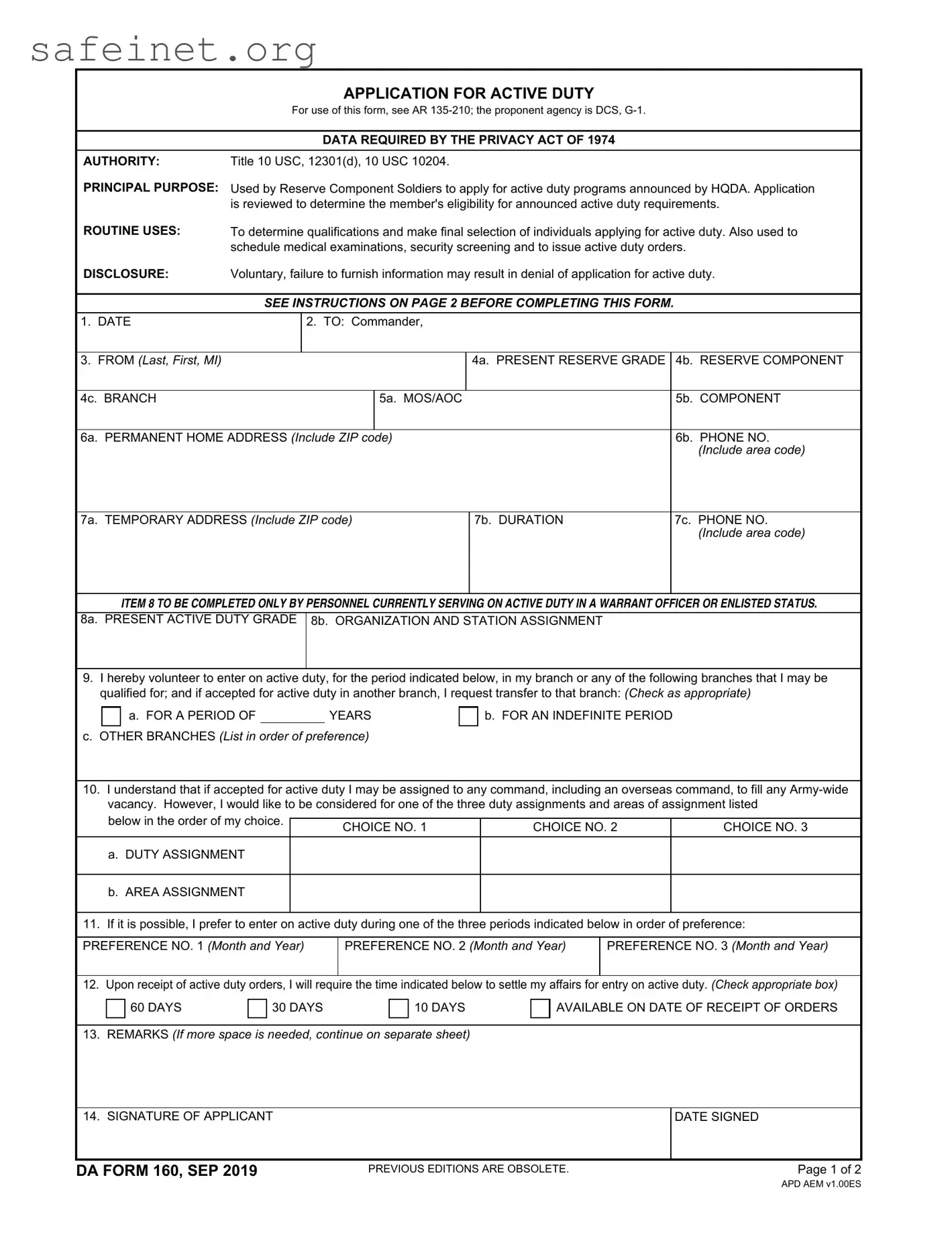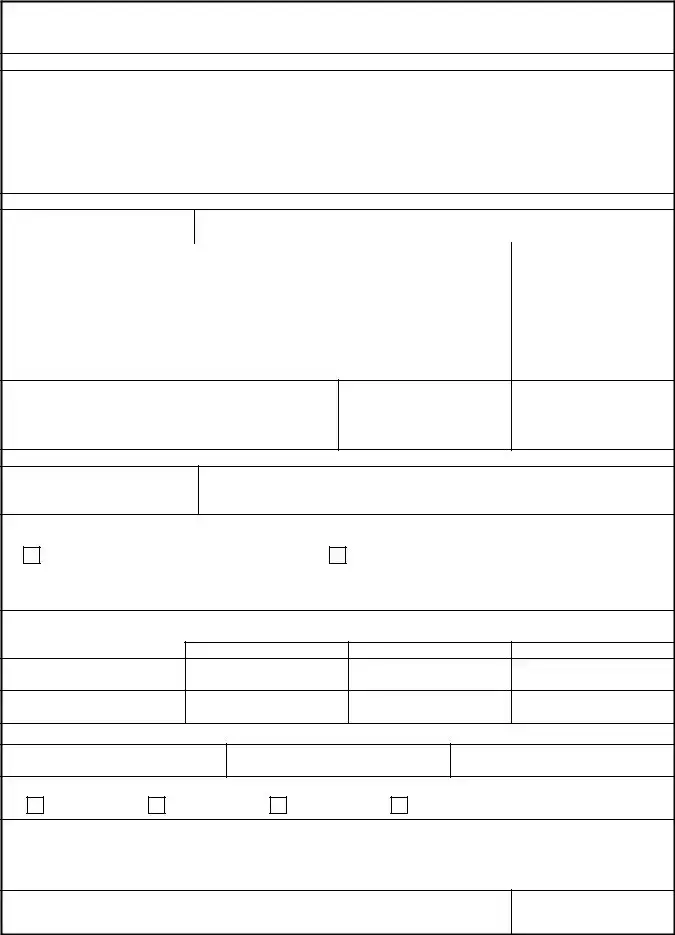INSTRUCTIONS
Read these instructions carefully and follow them. Reserve Component officers are normally recalled in their current Reserve grade. Grade of an individual applying for appointment and concurrent order to active duty will be determined by the approving authority.
1.The following instructions for items listed should be followed. Items not listed are considered to be self-explanatory. If space is insufficient for a particular item, continue under item 13, "Remarks," or on a separate sheet, indicating applicable item number.
2.The following instructions for items listed should be followed. Items not listed are considered to be self-explanatory.
ITEM 2. Insert appropriate area command such as as follows:
a.Personnel serving on active duty in a warrant officer or enlisted status: Enter the area command in which serving on active duty.
b.All others: Enter the area command having assignment jurisdiction over you.
ITEM 4. Items 4a through 4c will be completed by individuals currently holding appointments or enlistments as Reserves of the Army.
a.Item 4a: Enter present grade. Warrant officers will include Pay Grade in this item, such as WO, W-1, CWO, W-2, etc.
b.Item 4b: Enter the Reserve component of the Army to which assigned, using the following abbreviations:
"ARNGUS" for members assigned to the Army National Guard of the United States. "USAR" for members assigned to the Army Reserve
c. Item 4c: Commissioned officers--enter the branch to which assigned.
ITEM 5. Complete as specified below.
a.Item 5a: Enter your primary MOS or AOC.
b.Item 5b: Individuals applying for appointment as Reserve officers of the Army with concurrent active duty--enter the Reserve component for which applying.
ITEM 6. In this instance the term "Permanent Home Address" corresponds to your "Home of Record," an official term used in determining entitlement to travel allowances on separation from the service. This address will be indicated in orders placing you on active duty. NO CHANGE IN HOME OF RECORD IS AUTHORIZED AFTER ENTRY ON ACTIVE DUTY.
a.For applicants not on active duty--Enter your permanent home address.
b.For applicants currently on active duty as officers--enter home of record as shown on your warrant officer active duty orders.
c.For enlisted applicants currently on active duty--Enter home address as shown on your Enlistment Record (DD Form 4).
ITEM 7. This item to be completed if it is anticipated that you will be at this address when orders are issued. The temporary address, if furnished, will be included in your orders and you will enter on active duty from this address.
a.Item 7b: Show maximum period you anticipate being at the temporary address, such as "Until (give month and year)."
b.Item 7c: Furnish the telephone number at your temporary address.
ITEM 13. Include all information you consider essential from the standpoint of assignment restriction.
2.IMPORTANT--Review your application to ensure accuracy and completeness. Then forward your application according to applicable following instructions:
SOLDIERS OF THE ARMY NATIONAL GUARD OF THE UNITED STATES: To your unit commander. Applicants who are ARNG OCS candidates, BOLC students, or attending aviator courses will apply through proper school commandant.
SOLDIERS OF THE ARMY RESERVE: To your unit commander, if assigned to a unit. If not, send to U.S. Army Human Resources Command, Officer Accessions Branch (AHRC-ORD-A), 1600 Spearhead Division Avenue, Fort Knox, KY 40122-5204. Applicants who are USAR OCS candidates, BOLC students, or attending aviator courses will apply through proper school commandant.
OFFICERS OR ENLISTED PERSONNEL ON ACTIVE DUTY: To your present unit commander.
INDIVIDUALS APPLYING FOR APPOINTMENT WITH CONCURRENT ACTIVE DUTY: Submit together with your application for appointment according to regulations applicable to the type of appointment requested.
DA FORM 160, SEP 2019 |
Page 2 of 2 |


